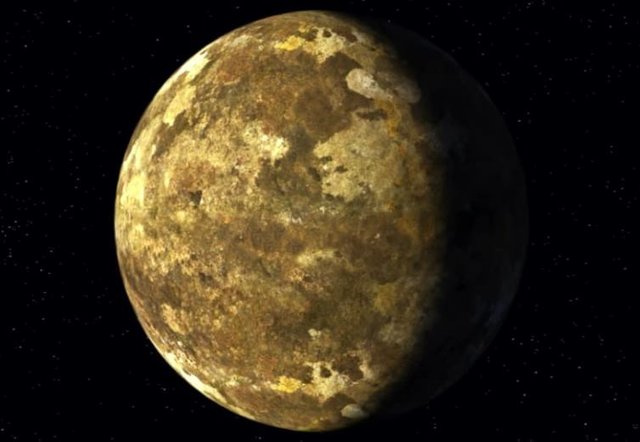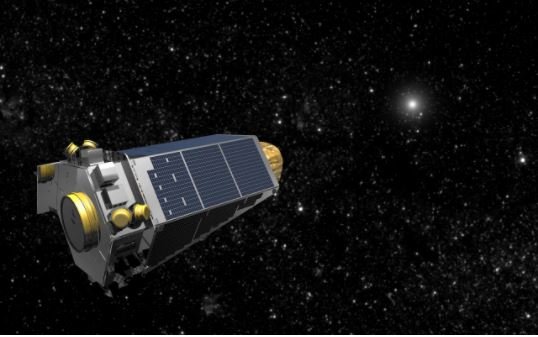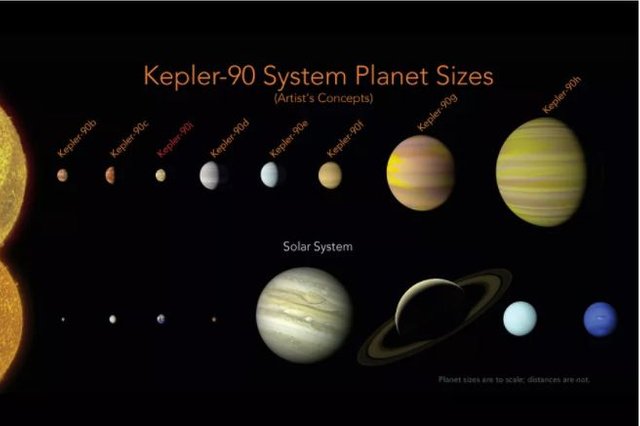Artificial Intelligence Discovers New Planet
Space scientists and researchers now know of two new planets in the Galaxy, thanks to the power of Artificial Intelligence. The AI machine learning technique known as “neural network” identified two exoplanets (planets that are not in earth’s solar system) in our galaxy.
The report was made public in an announcement made by National Aeronautics and Space Administration (NASA) scientists and Google software engineer, Christopher Shallue, on 14th December, 2017.

The discovery of exoplanets is not new when it comes to space studies. This is because the Kepler Space Telescope, which is the key instrument used by scientists to discover exoplanets, has already identified a confirmed number of over 2,500 exoplanets with about 1000 still suspected.

What is new about the recent announcement, however, is the fact that researchers used an Artificial Intelligence system to spot two new worlds, one of which is called the “Kepler-90i” (about 30% larger than earth, and very hot).

The interesting aspect of the ‘Kepler-90i’ planet to astronomers, is that it brings the number of identified planets orbiting that star to eight; a figure which matches our own current solar system. The reported average temperature of the ‘Kepler-90i’ is thought to be over 800 degrees Fahrenheit (426°Celsius).
Neural Network - The A.I
The AI used for the discovery called Neural Network is relatively common. It is a software that learns from data and not like a program that has had rules programmed into it. Neural networks also powers image recognition of Google photos, the FaceID system on iPhone X, and language translation on Facebook.
Neural Networks AI functions by learning. An example of how a neural network learns is to compare pictures of dogs and cats by feeding it with pictures. If labelled pictures of dogs or cats are fed into a neural network, the AI would later be able to identify any new image that is considers to have dogs and cats in them because it has been trained to do so.
During a NASA teleconference on Thursday 14th December, a senior software engineer at Google AI, Christopher Shallue said;
“Neural networks have been around for decades, but in recent years they have become tremendously successful in a wide variety of problems, and now we’ve shown that neural networks can also identify planets in data collected by the Kepler Space Telescope.”
How the Neural Network AI was trained
Just as space astronomers require telescopes in order to study and search for exoplanets, researchers of Artificial Intelligence require a vast amount of labelled data for AI analysis.
In the case of the neural network AI, Christopher Shallue trained the system by using 15,000 labelled signals of data they had already acquired from Kepler.
The signals obtained from Kepler called “light curves”, are measures of how a star’s light dips when a planet that is orbiting the star, passes between the star and Kepler’s eye. This technique is known as the ‘transit method’.
Out of the 15,000 signals used for the AI system, 3,500 were ‘light curves’ from a passing planet. The rest of the signals were ‘false positives’, which are light curves made by something similar to a star spot, but not a planet that orbits.
This procedure was taken so that the ‘neural network’ could be tutored to differentiate between ‘light curve’s made from orbiting planets and the signals from some other phenomena.

Identification of the new planets
After training the neural network AI, Christopher Shallue and his collaborator, a NASA Sagan postdoctoral fellow, Andrew Vanderburg, released the neural network on data from Kepler which wasn’t in its original training set.
The neural network sifted through data sets of 670 star systems. It eventually streamlined and focused its analysis on weak signals that could represent previously undiscovered planets, and sure enough, two new worlds were discovered.
Still describing the AI, Christopher Shallue said;
“Machine learning really shines in situations where there is too much data for humans to examine for themselves.”
Christopher Shallue also said that seeping through weak signals from the 670 stars and discovering the two new planets was a “proof of concept”, that their ‘Neural Network AI works.
Shallue and his team intend to further put the AI to more work, on much wider data consisting of signals from about 150,000 additional stars.
During the press conference, stated that while Artificial Intelligence systems might have been used in similar research project before, the use of the ‘neural network’ AI was the first time that the system would be used specifically to identify a new exoplanet.
Christopher Shallue also admitted that he collaborated with Andrew Vanderburg on the research project because he is no astronomy expert.
Summary
The discovery of the new planets by NASA certainly means we are no longer the unique solar system in the galaxy, neither are we still the largest system.
The Kepler star system has tied with our Solar system as the biggest, with eight
confirmed planets. This is the first time that any system has been discovered to have as many planets (8) as our own solar system.
The Kepler-90i exoplanet orbits its own sun every 14 days, and boasts of a surface temperature of about 800F or 426°C.
The research indicates that there is still a lot of unexplored "real estate" in the Kepler star system, and it would not be so much of a surprise, if in future more planets are discovered.
Source/Reference: 1, 2, 3, 4, 5
Thank you for your time and for reading my post.
If you found this post interesting, then kindly UPVOTE, RESTEEM and FOLLOW @rickie, for more quality posts.

Congratulations @rickie! You have completed some achievement on Steemit and have been rewarded with new badge(s) :
Click on any badge to view your own Board of Honor on SteemitBoard.
For more information about SteemitBoard, click here
If you no longer want to receive notifications, reply to this comment with the word
STOPA new planet! Awesome! So it's 10 now...
This post has received gratitude of 6.11 % from @appreciator thanks to: @rickie.
You got a 3.93% upvote from @upme requested by: @rickie.
Send at least 1.5 SBD to @upme with a post link in the memo field to receive upvote next round.
To support our activity, please vote for my master @suggeelson, as a